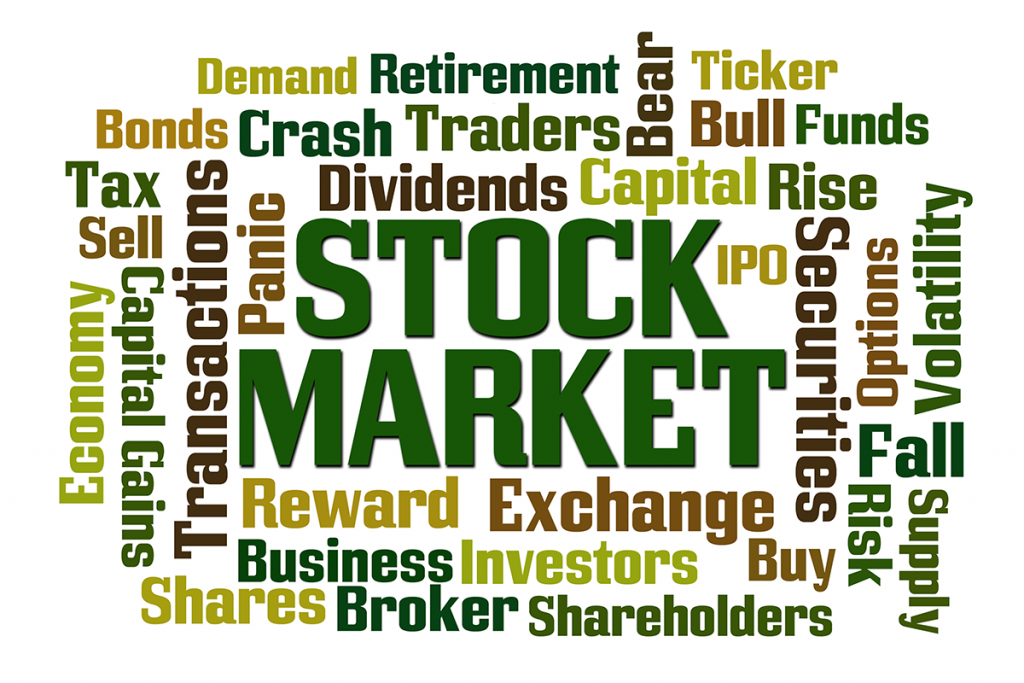Ever wondered about the cryptic jargon swirling around the stock market? You’re not alone. The world of finance often feels like a foreign language, filled with terms like “bull market” and “short selling” that leave many scratching their heads. But fear not, because we’re here to demystify the financial world! This article is your guide to understanding the stock market, with a comprehensive glossary of terms defined in plain English. We’ll break down the essentials, helping you navigate the complex landscape of trading and investing with confidence.

Image: www.smifslimited.com
A glossary of stock market terms PDF can be your ultimate companion in this world. It’s like having a pocket dictionary of financial terms right at your fingertips, ready to explain anything you encounter. Our guide will equip you with the knowledge to make informed decisions about your investments, understand financial news, and participate confidently in the market. Let’s dive in and unlock the secrets of the stock market together.
The A-Z of Stock Market Terminology
A
Annual Report: A document published by a public company each year, outlining its financial performance, management strategies, and future prospects. It’s a valuable resource for investors who want to get a comprehensive view of a company’s health and potential.
Asset: Anything of value that can be owned or controlled, and can be traded for cash. Examples range from physical assets like property and cars to intangible assets like intellectual property and patents. For investors, assets are the foundation of their portfolios, representing the investments they hold.
B
Bear Market: A period of sustained decline in the stock market, usually marked by a 20% or more drop in market indexes. This usually signifies a period of economic pessimism and investor fear. The term “bear” signifies a downward trend, contrasting with the “bull” market, which signifies an upward trend.
Bond: A type of debt security, representing a loan made from an investor to a borrower, such as a company or government. Investors buy bonds in exchange for regular interest payments and the promise of repayment of the principal amount at maturity.

Image: www.pacetechnosoft.co.in
C
Capital Gains: Profit earned from the sale of an asset, such as a stock or bond, for a price higher than the purchase price. These gains are taxable and are an important component of investor returns.
Capital Loss: A loss incurred when an asset is sold for a price lower than the purchase price. These losses can be used to offset capital gains, reducing tax liability.
D
Dividend: A payment made to shareholders by a company, distributing a portion of its profits. Companies can choose to pay dividends in cash or shares, and they can be a source of regular income for investors.
Diversification: A strategy of investing in a variety of assets across different sectors, industries, and asset classes. Diversification helps reduce risk by spreading investments across multiple areas, potentially mitigating losses if one particular asset class performs poorly.
E
Earnings Per Share (EPS): A key financial metric that represents a company’s profitability on a per-share basis. It’s calculated by dividing net income by the number of outstanding shares. EPS is a significant indicator for investors as it reflects the company’s ability to generate profits for its shareholders.
Equity: The value of an asset after deducting liabilities. In the context of a company, it represents the value of the company owned by shareholders. It’s a key element of a company’s financial structure and is often used to calculate various financial ratios.
F
Financial Statement: A formal report that summarizes the financial condition of a company or organization. There are three main types: the balance sheet, the income statement, and the cash flow statement. These statements provide vital information to investors, creditors, and regulatory agencies.
Futures Contract: A legal agreement to buy or sell an asset at a predetermined price on a specified date in the future. Futures contracts are widely used to hedge against price fluctuations in commodities like oil or agricultural products, but can also be used for speculation.
G
Growth Stock: A company’s stock that is expected to grow at a faster rate than the overall market. These companies often invest heavily in research and development, and tend to have high earnings potential. Investors typically seek growth stocks for long-term capital appreciation.
Gross Domestic Product (GDP): The total value of goods and services produced in a country during a specific period. GDP is a key indicator of economic health, and its growth or decline often reflects the overall health of the stock market.
H
Hedge Fund: A private investment fund that uses advanced investment strategies, often employing leverage and complex financial instruments, to generate high returns. Hedge funds often target sophisticated investors and tend to have high fees and a specific investment mandate.
Holding Period: The length of time an investor owns an asset. This can be a few days or even decades, depending on the investment strategy and goals.
I
Index Fund: A type of mutual fund or exchange-traded fund (ETF) that tracks a specific market index, such as the S&P 500 or the Nasdaq 100. Index funds provide broad market exposure and are considered a low-cost way to invest in a diversified portfolio.
Initial Public Offering (IPO): When a private company first sells its shares to the public, becoming a publicly traded company. IPOs can be highly sought-after by investors, and can generate significant returns if the company performs well.
J
Junk Bond: A high-yield bond, typically issued by companies with lower credit ratings. These bonds carry higher risk of default, but also offer the potential for higher returns. Investing in junk bonds can be risky, but can be a part of diversification strategy for some investors.
Joint Venture: A business arrangement between two or more entities to collaborate on a specific project or venture. Joint ventures can be a way to share risks and resources, and can be beneficial for both parties involved.
Glossary Of Stock Market Terms Pdf
K
Key Performance Indicator (KPI): A quantifiable measure used to track and assess progress towards a specific goal. KPIs can be used to monitor the performance of a company, a portfolio, or an investment strategy.
Know Your Client (KYC): A regulatory requirement for financial institutions to verify the identity of their clients to prevent fraud and money laundering.






